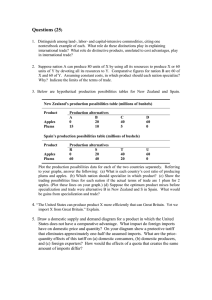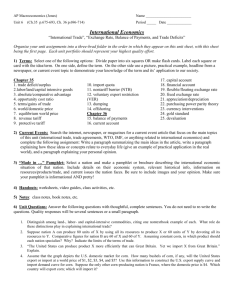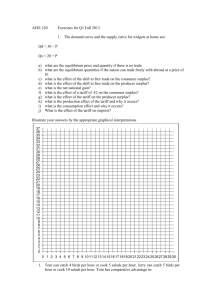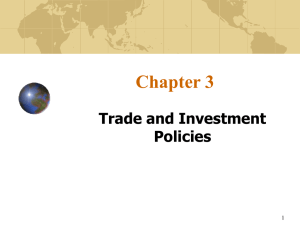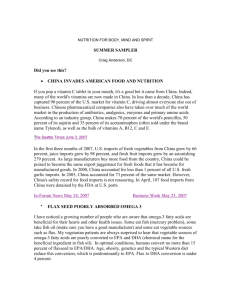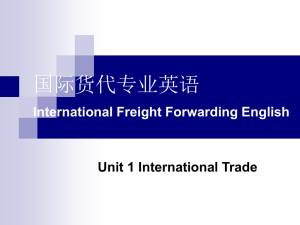Chapter 20 Key Question Solutions
advertisement
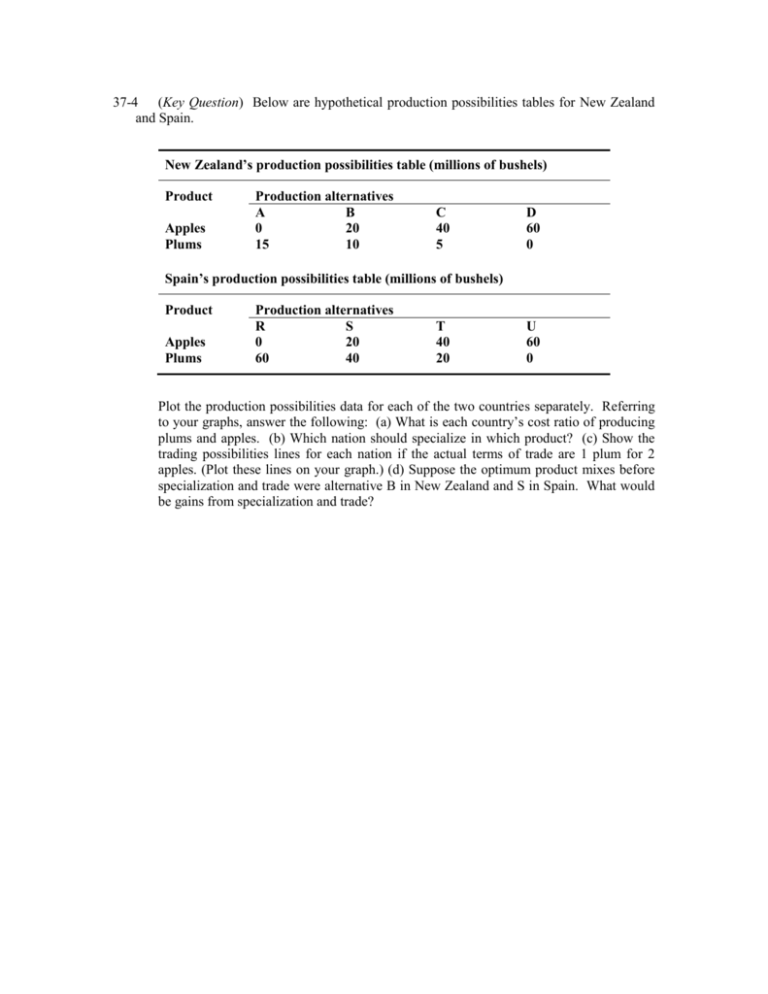
37-4 (Key Question) Below are hypothetical production possibilities tables for New Zealand and Spain. New Zealand’s production possibilities table (millions of bushels) Product Apples Plums Production alternatives A B 0 20 15 10 C 40 5 D 60 0 Spain’s production possibilities table (millions of bushels) Product Apples Plums Production alternatives R S 0 20 60 40 T 40 20 U 60 0 Plot the production possibilities data for each of the two countries separately. Referring to your graphs, answer the following: (a) What is each country’s cost ratio of producing plums and apples. (b) Which nation should specialize in which product? (c) Show the trading possibilities lines for each nation if the actual terms of trade are 1 plum for 2 apples. (Plot these lines on your graph.) (d) Suppose the optimum product mixes before specialization and trade were alternative B in New Zealand and S in Spain. What would be gains from specialization and trade? 37-6 (a) New Zealand’s cost ratio is 1 plum = 4 apples (or 1 apple = 1/4 plum). Spain’s cost ratio is 1 plum = 1 apple (or 1 apple = 1 plum). See the graphs. (b) New Zealand should specialize in apples, Spain in plums. (c) See the graphs. (d) Total production before specialization and trade: 40 applies (20 + 20) and 50 plumbs (10 + 40). After specialization and trade: 60 applies and 60 plums. Gain = 20 applies and 10 plums. (Key Question) Refer to Key Graph 3.6, p. 55 (Chapter 3). Assume that the graph depicts the U.S. domestic market for corn. How many bushels of corn, if any, will the United States export or import at a world price of $1, $2, $3, $4, and $5? Use this information to construct the U.S. export supply curve and import demand curve for corn. Suppose the only other corn-producing nation is France, where the domestic price is $4. Which country will export corn; which will import it? 37-7 At $1: import 15,000. At $2: import 7,000. At $3: no imports or exports. At $4: export 6,000. At $5: export 10,000. The United States will export corn; France will import it. (Key Question) Draw a domestic supply and demand diagram for a product in which the United States does not have a comparative advantage. What impact do foreign imports have on domestic price and quantity? On your diagram show a protective tariff that eliminates approximately one-half the assumed imports. What are the price-quantity effects of this tariff on (a) domestic consumers, (b) domestic producers, and (c) foreign exporters? How would the effects of a quota that creates the same amount of imports differ? See the graph. The United States does not have a comparative advantage in this product so the world price Pw is below the U.S. domestic price of Pd. Imports will reduce the domestic price, increasing consumption from nontrade Qc to Qe, and decreasing domestic production from Qc to Qa. See the graph. A tariff of PwPt (a) harms domestic consumers by increasing price from Pw to Pt and decreasing consumption from Qe to Qd; (b) aids domestic producers through the increase in price from Pw to Pt and the expansion of domestic production from Qa to Qb; (c) harms foreign exporters by decreasing exports from QaQe to QbQd. An import quota of QbQd would have the same effects as the tariff, but there would be no tariff revenues to government from these imports; this revenue would effectively go to foreign producers.
